Lost Childhood: Horrible child labor conditions photographed by Lewis Hine
Categories: Children | History | North America
By Pictolic https://pictolic.com/article/lost-childhood-horrible-child-labor-conditions-photographed-by-lewis-hine.htmlLewis Hine was one of the first photographers to use photography as a tool to combat those terrible working and living conditions that he believed could be changed. Hine has become a symbol of the fight against the exploitation of child labor in factories and factories in the United States. After all, he knew this world like no one else: after the death of his father, Hine went to work in a factory in order to earn money for training.
In 1908, the American National Child Labor Committee invited Hine to work as a photojournalist. His published series of photographs shocked America because the use of child labor and its conditions were carefully hidden from the public. Working for the committee turned out to be really dangerous - the photographer, whose work showed the horror of life and the conditions in which children were kept, was threatened with physical violence and even death. Therefore, Hine entered the factories under any pretext that seemed convincing enough to the police or the guards. Often he posed as a fire inspector, a postcard and bible salesman, and an industrial photographer. His efforts were not in vain - a law was passed to protect the rights of working children.
Hine also documented the life of immigrants, during the First World War he talked about the work of the American Red Cross in Europe, made the famous series of photographs about the construction of the Empire State Building skyscraper. True, the famous photographer did not wait for a response of gratitude from the American society and the government - he died after an operation in a New York hospital for the poor.
To this day, Hine's photographs are popular as a symbol of that era. His work still causes pain and shame that such a thing could ever happen in our history. And recently for Time magazine, photo editor Sanna Dallaway colorized Lewis Hine's most famous and significant works.
(Total 28 photos)
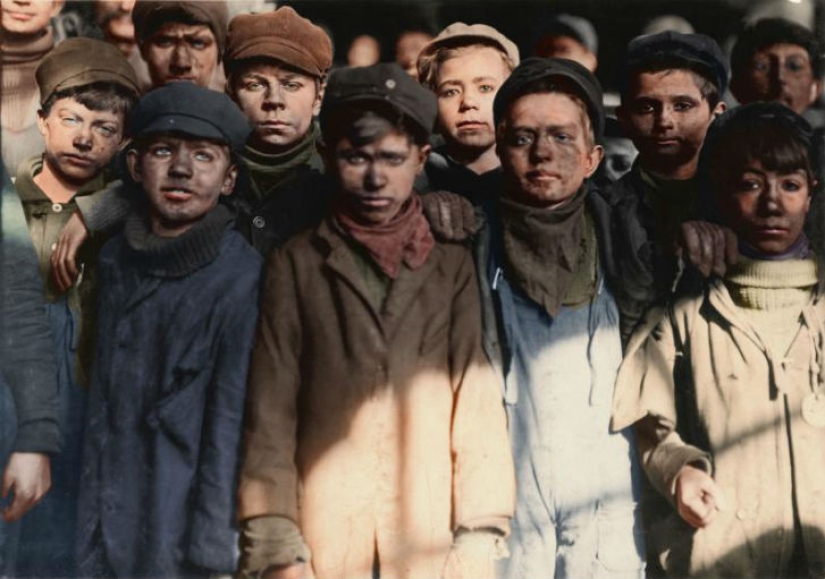 Source: time.com
Source: time.com
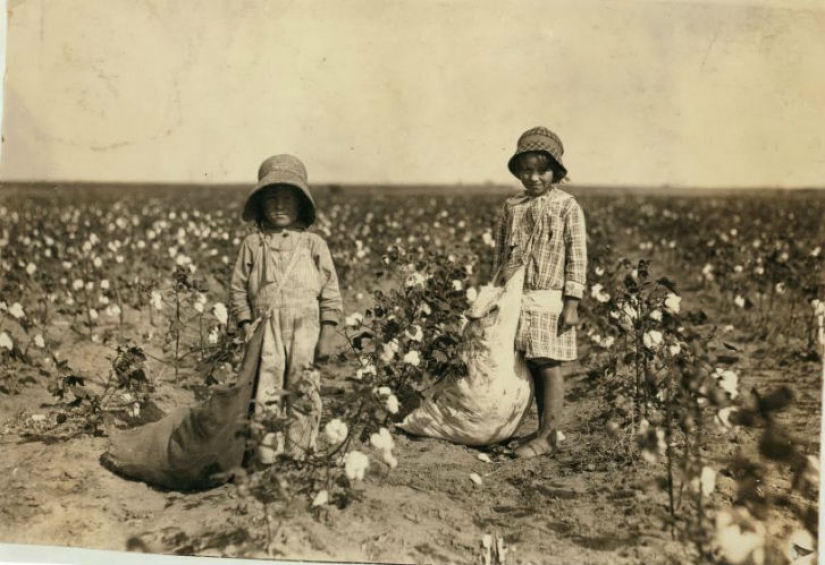
Jewel and Harold Walker, 6 and 5 years old. Up to 11 kg of cotton is harvested every day. 1916 Comanche County, Oklahoma.
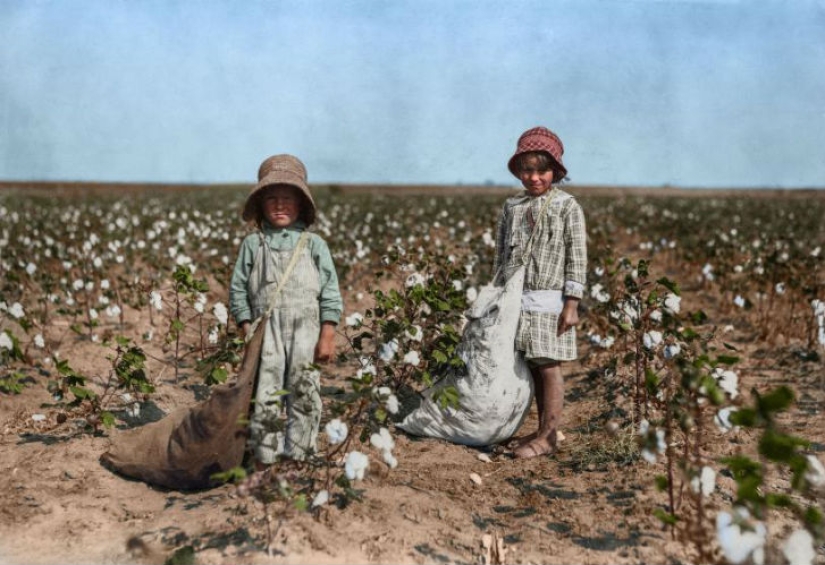
Photo in color.
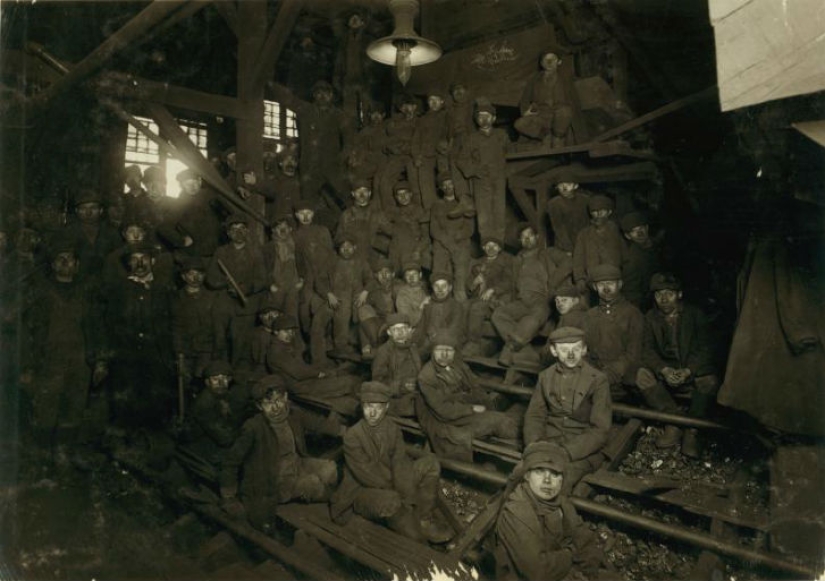
Coal crushers at Pennsylvania Coal Co.'s Ewen Breaker plant. in Pittston, Pennsylvania, 1911.
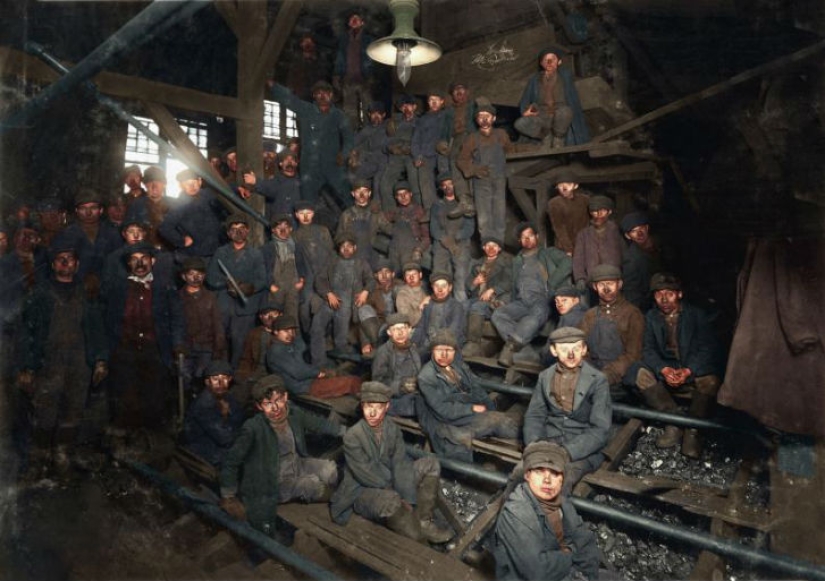
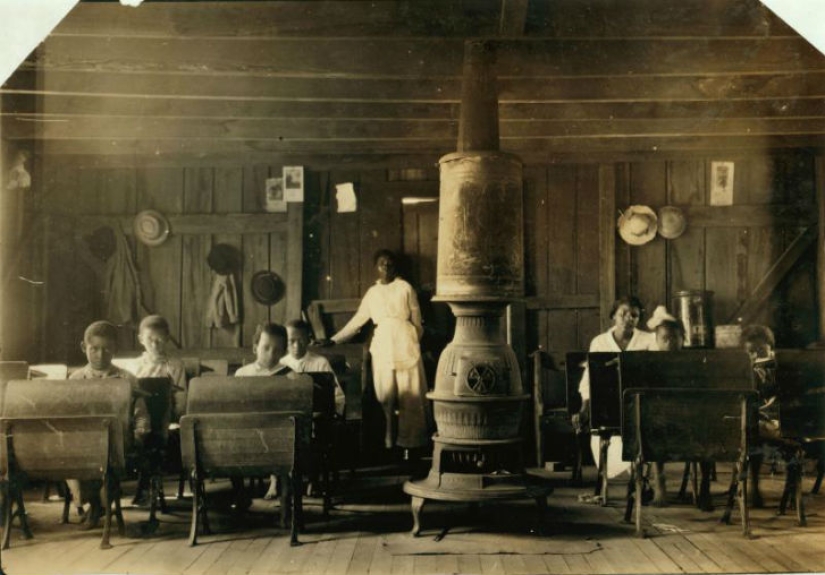
A black school in Kentucky, 1916. Only a third of the students are present at the lesson, since, according to the teacher, the rest work on tobacco plantations.
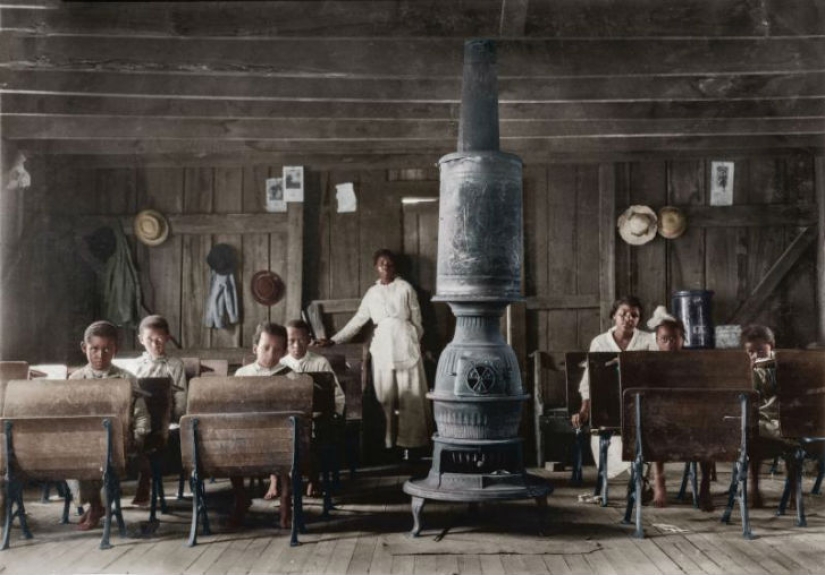
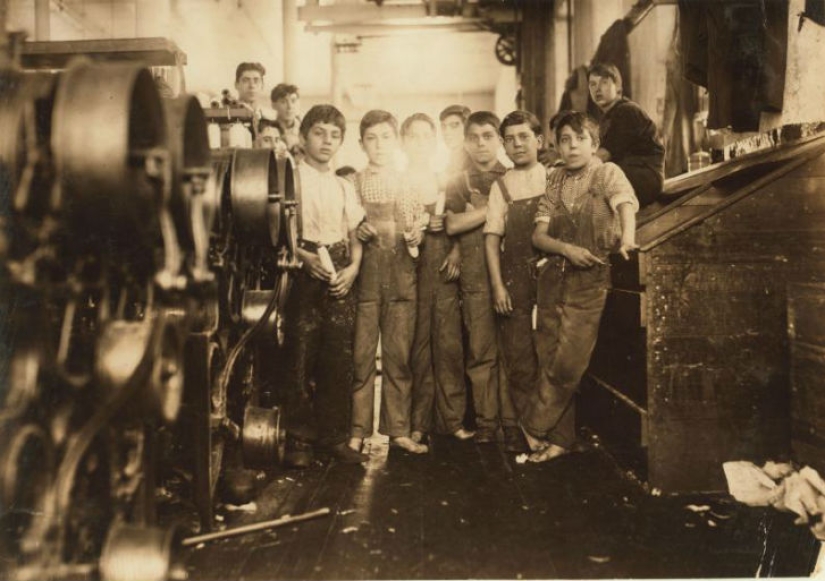
Workers at the Seaconnet Mill textile factory. Photographer Lewis Hein recorded the stories of the heroes of his work. He noted the height and age of working children, as well as education. In this photograph, none of the boys could read or write.
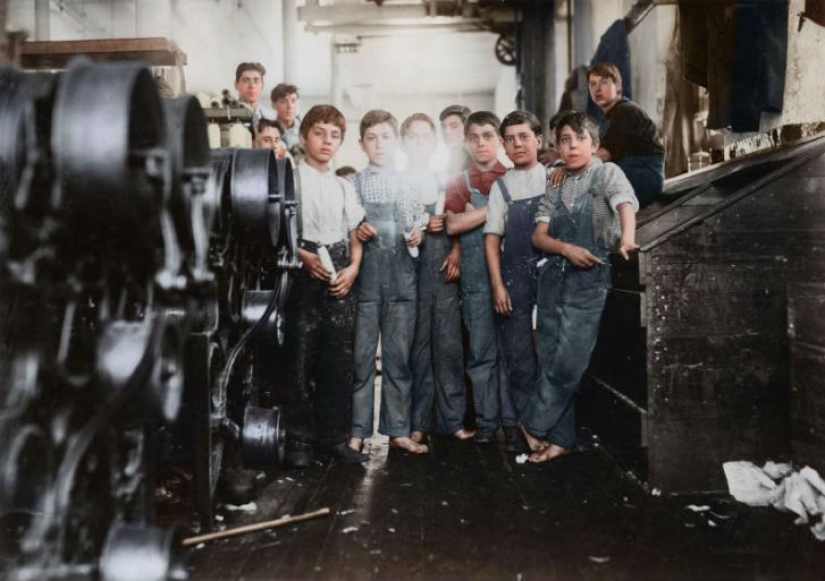
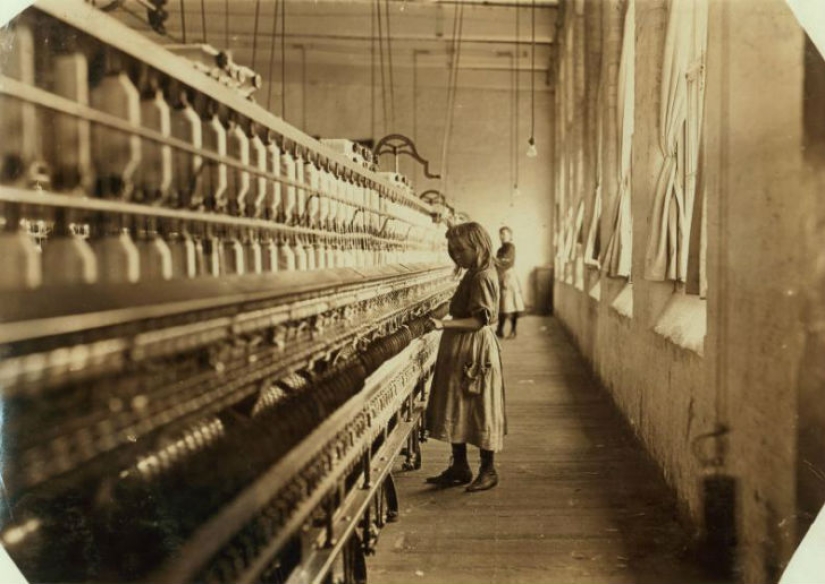
Sadie Pfeiffer, 121 cm tall, works at the Lancaster Cotton Mills for half a year, 1908.
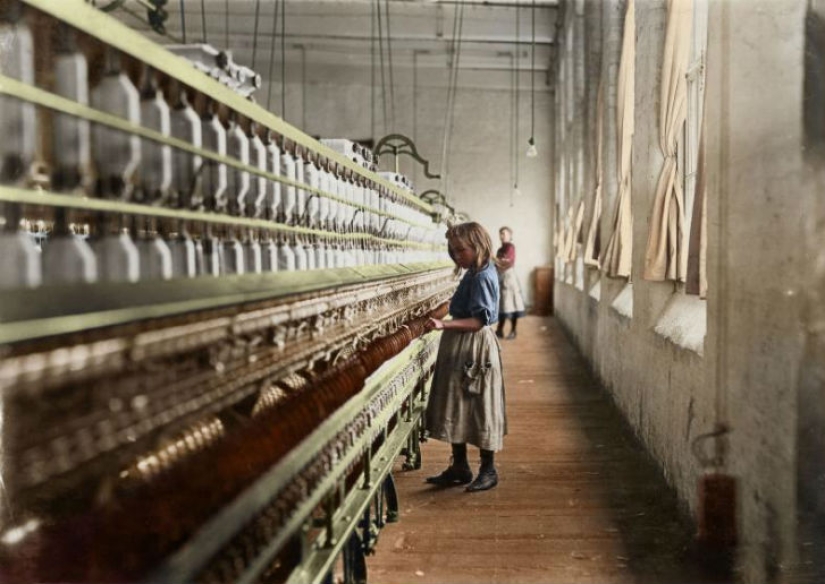
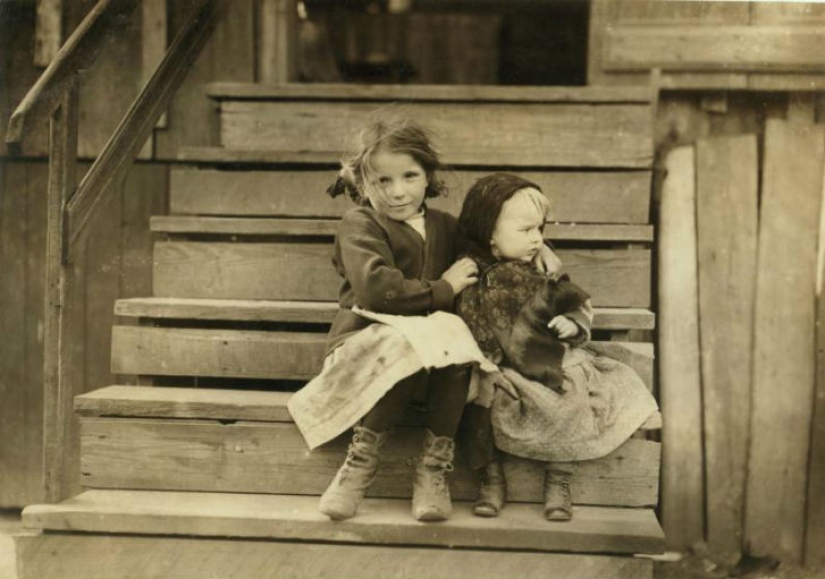
Julia stays at home with the younger children. Other children, older ones, work in the factory. 1911 Bayou La Batre, Alabama.
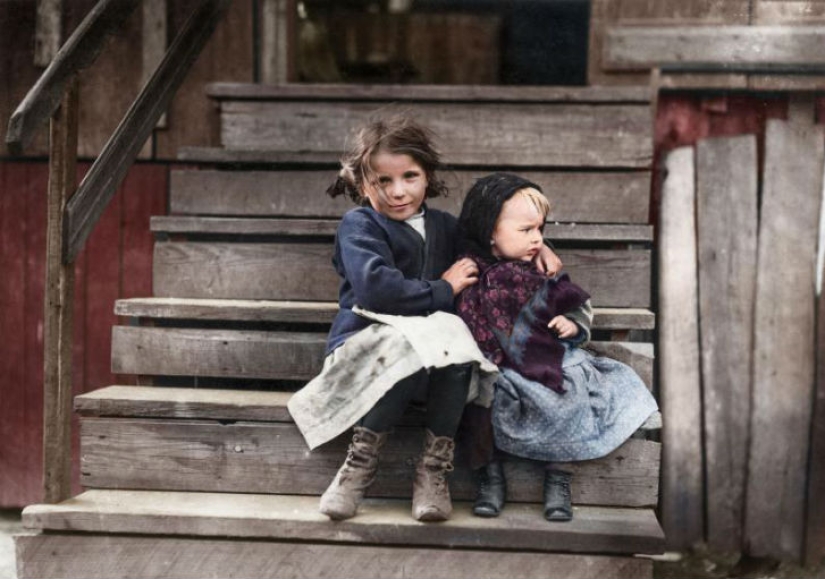
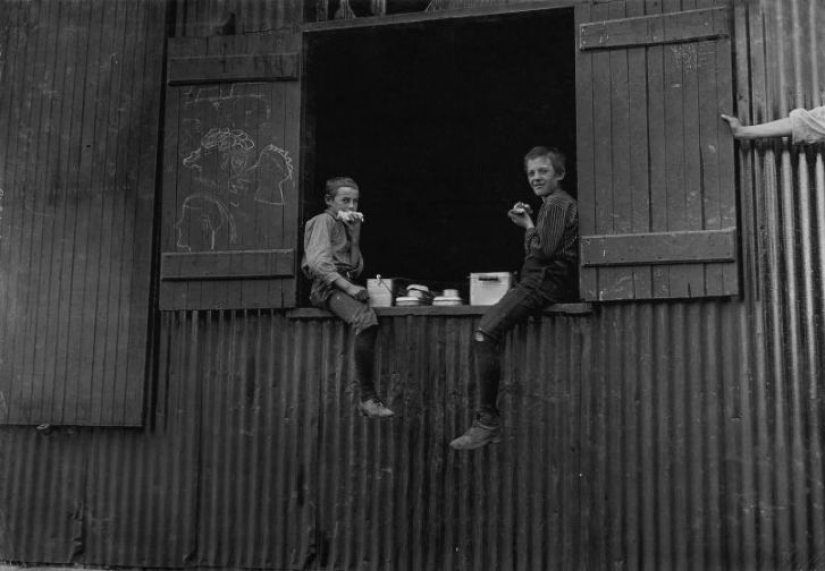
Lunch break at the Economy Glass Works in Morgantown, West Virginia, 1908
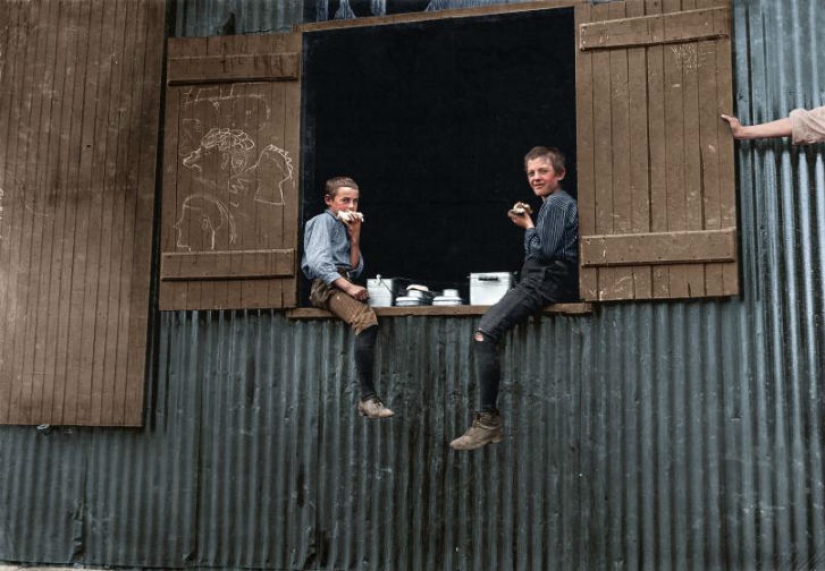
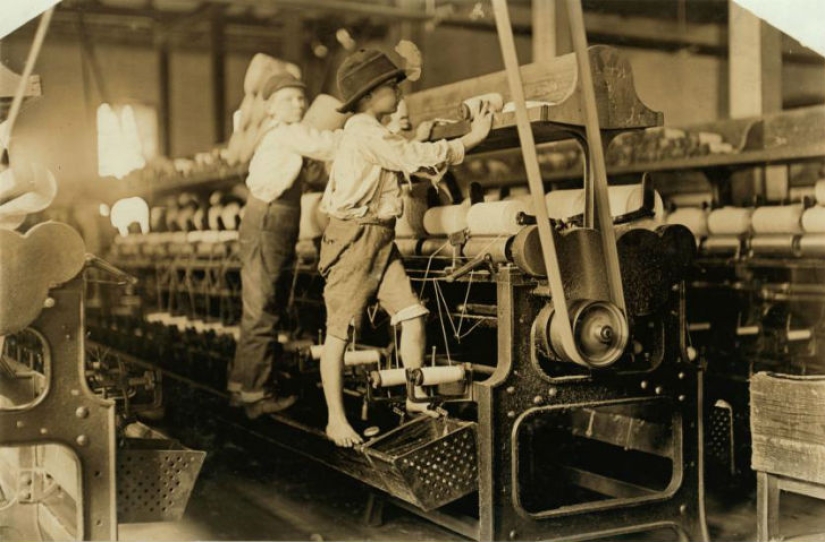
Textile Mill Bibb Mill No. 1. Some of the boys were so small that they had to climb onto a winder to connect broken threads. Macon, Georgia, January 1909.
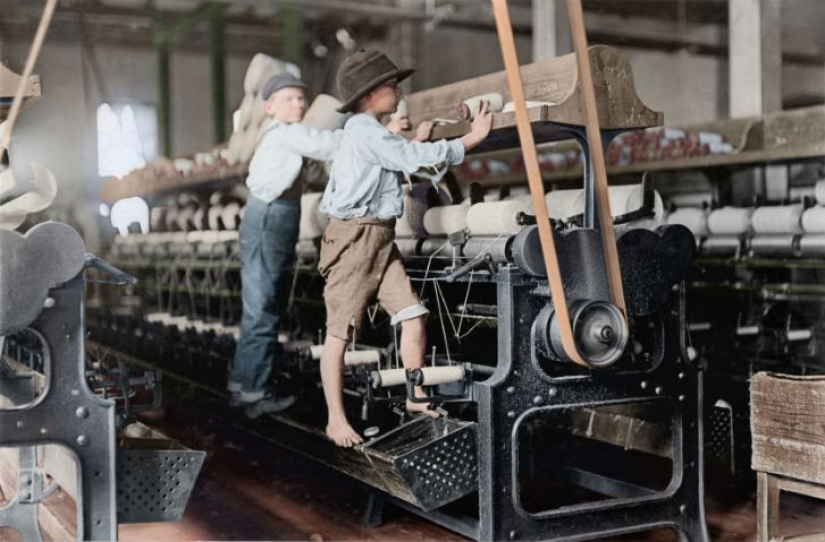
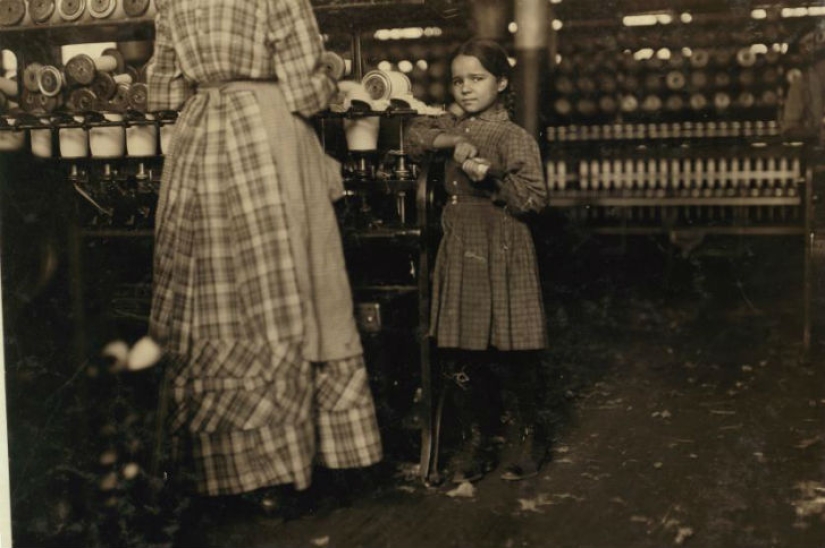
7-year-old Fanny, 121 cm tall, with her sister at a factory in Elk Mills. Her older sister said that Fanny helps her a lot, although not all day. The sisters start working at 6 o'clock in the morning. There are 19 children in their family.
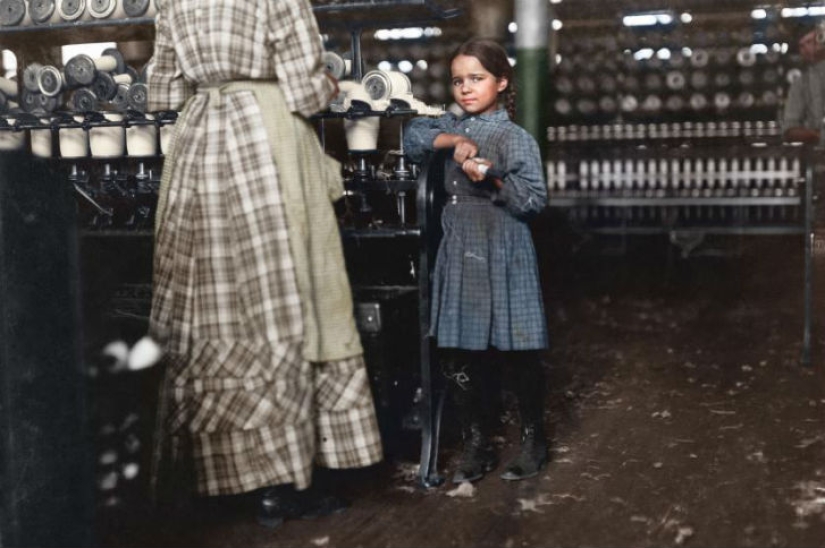
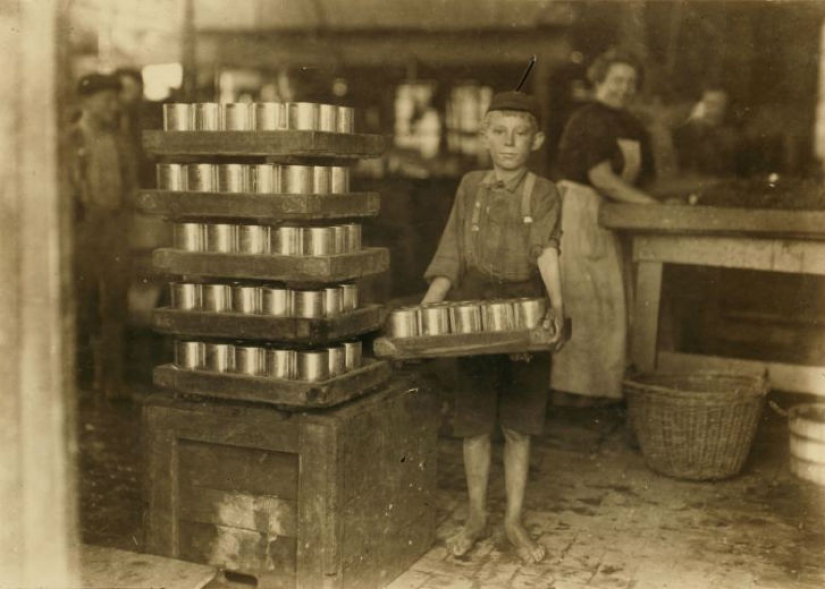
A boy works at the J.S. Farrand Packing Company cannery in Baltimore, Maryland, July 1909.
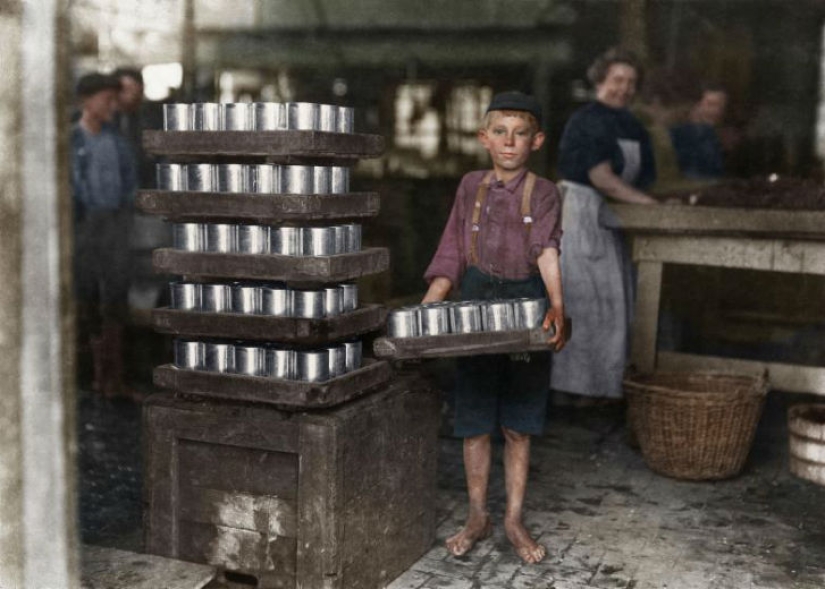
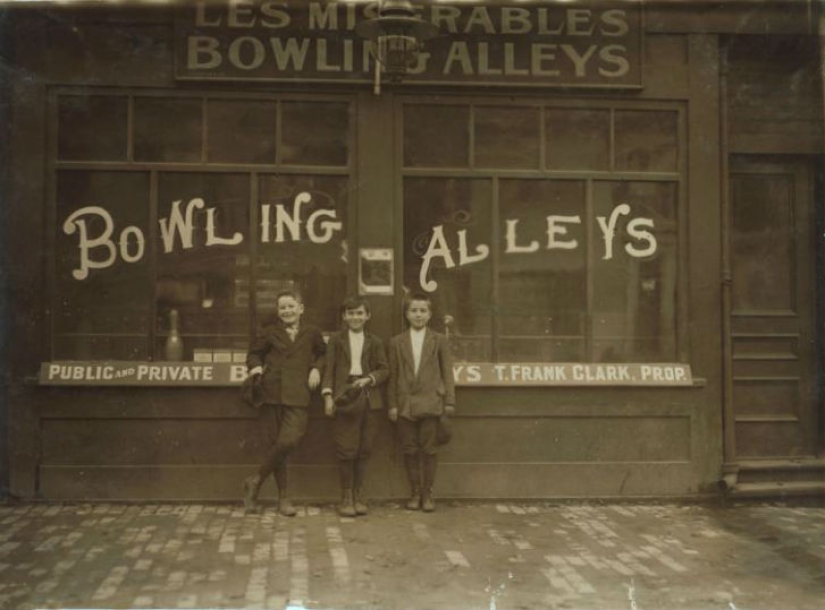
11-year-old boys who earn between two and four dollars a week, including working at night.
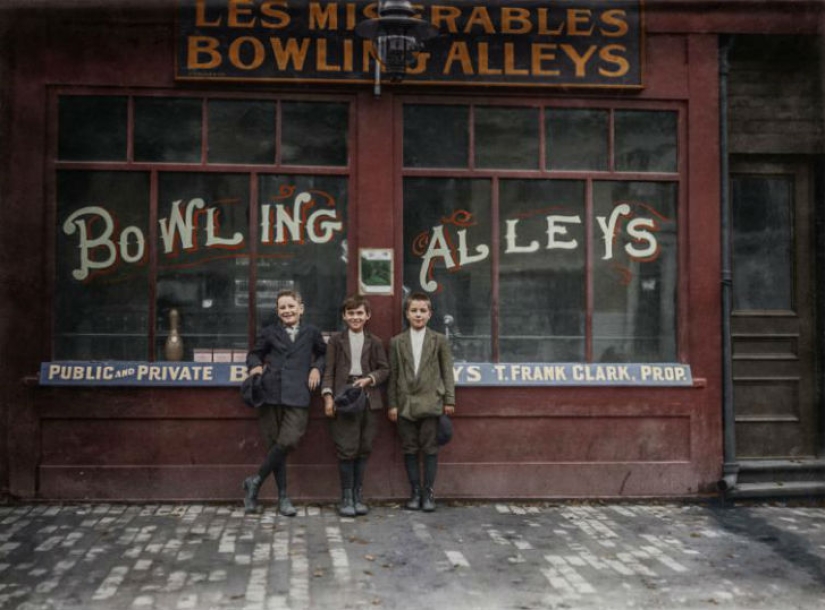
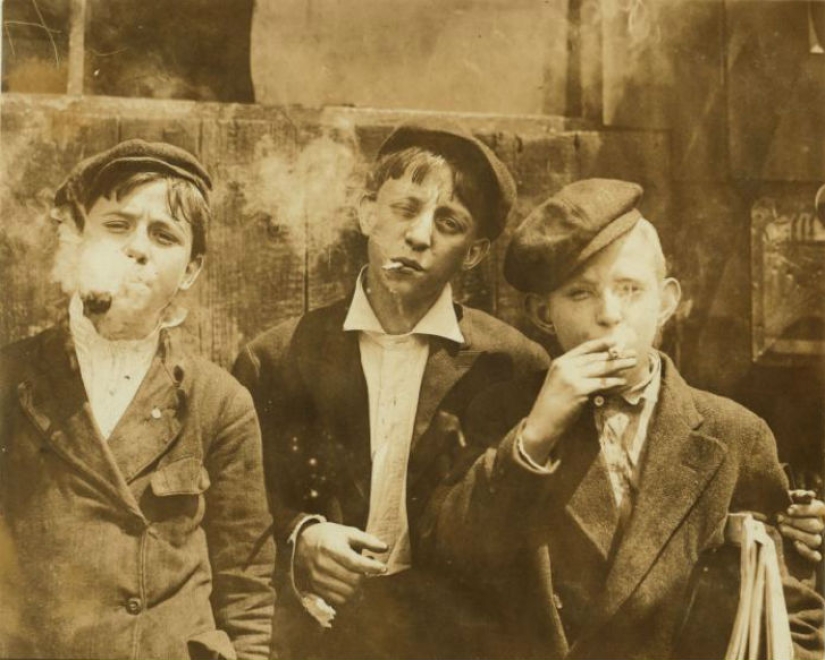
Newspaper sellers, St. Louis, 1910 All three smoke.
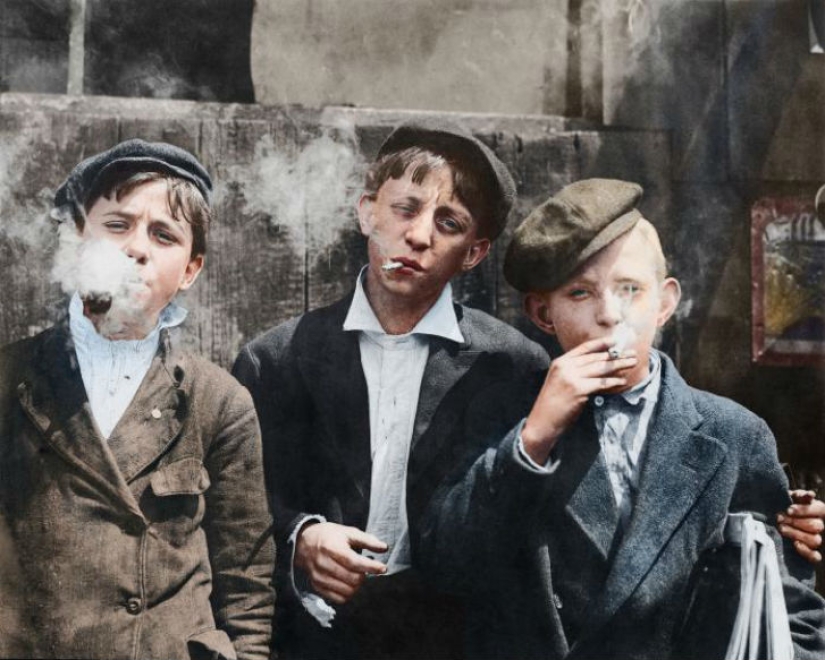
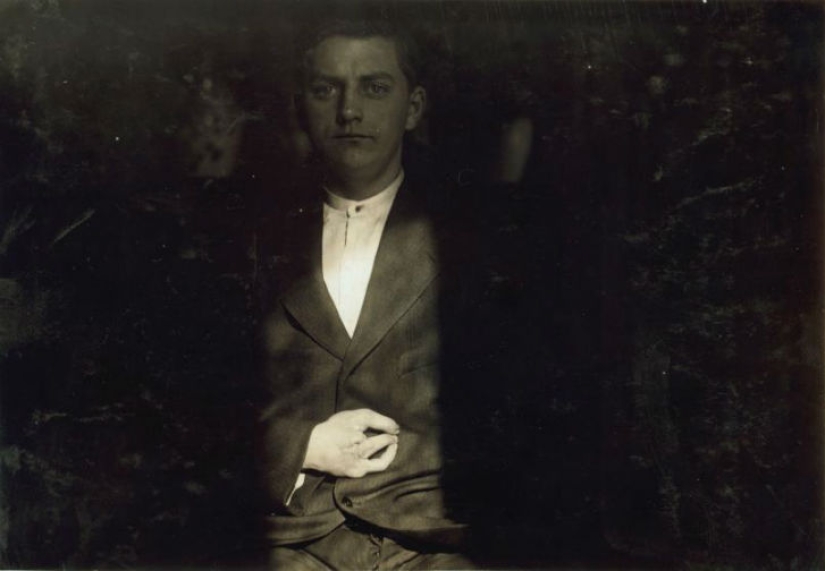
15-year-old Frank Weigel fell asleep on an 18-hour shift and as a result received a work injury - the fingers that fell into the machine were amputated.
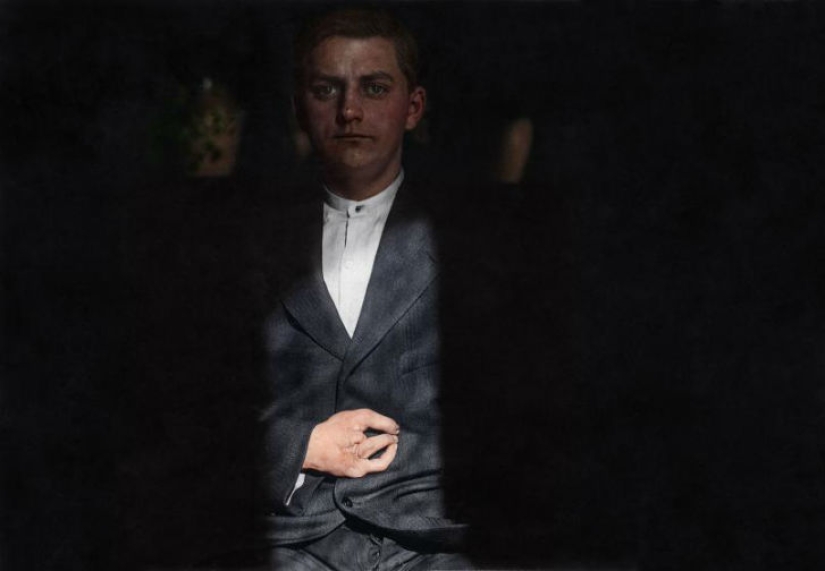
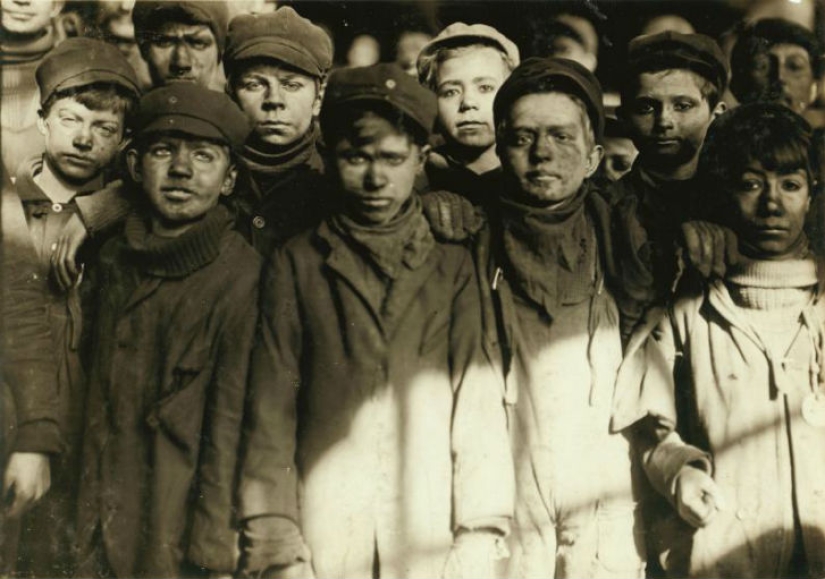
Coal crushers at Plant 9 of Pennsylvania Coal Co. in Pittston, 1911
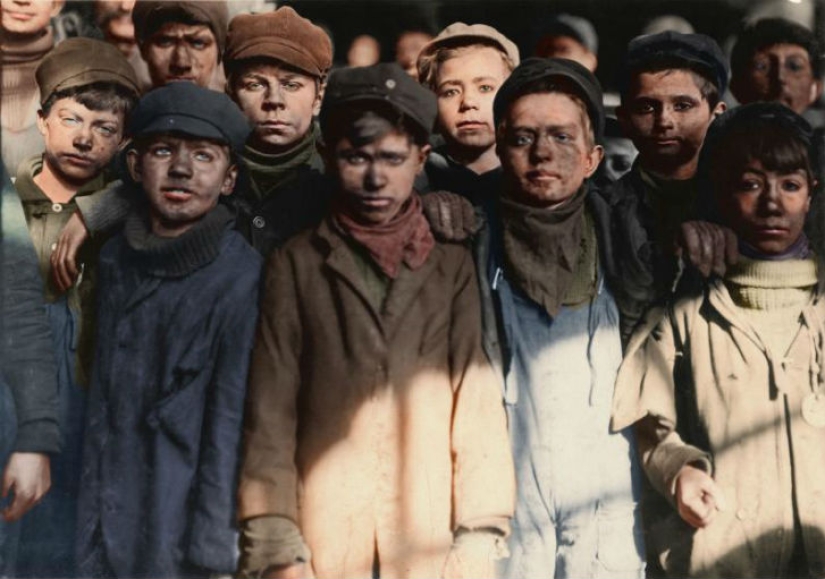
Keywords: XX century | Child labor | Childhood | Lewis Hine | Reforms | USA | Labor | Difficult childhood
Post News ArticleRecent articles

If we talk about multi-faceted talented individuals, then we can safely cite Pavel Vlasov as an example. Although this name won't ...

In the estates of landlords under serfdom, servants of various profiles lived and worked. It was believed that the more servants a ...
Related articles

Every boy in his childhood had found a strange metal plate with the letters "W", "E", and sometimes "P". Their origin was shrouded ...

In early October, a user of the social network Reddit asked users a question in the AskReddit section that, in any awkward ...

The craze for middle-aged people cooking is understandable. We were fed in kindergartens and schools, that the psyche is trying to ...

New York-based photographer Ryan McGinley is known for his unusual, heart-wrenching projects. His series "Kiss and Make ...